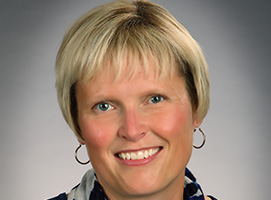enrollment
7 ways Excelsior may have influenced private college enrollments in the Northeast this year [CHECKLIST]
Use this checklist of seven critical data points to evaluate the fall 2017 impact of New York State’s free tuition and Excelsior Scholarship Program if your private institution is reliant on New York State enrollments
Since April 8, 2017, when Governor Andrew Cuomo announced the implementation of the Excelsior Scholarship program (a free tuition program for students attending public two-year and four-year institutions in New York), private institutions in the state have mostly been in a wait-and-see mode. Because the announcement came just before the May 1 priority decision deadline for students, and details of the program were limited, it was difficult to assess the potential impact of the program on private institutions (see a previous post from the time of the announcement).
Since then, some have weathered the free tuition announcement better than others. The reasons vary, but for every private institution, analyzing data is critical to future decisions. Below are seven data points to assess to quantify the potential enrollment impact of the Excelsior Scholarship program on your enrollment.
Checklist of 7 ways Excelsior may have influenced private institution enrollments
1. Did you lose late enrollments this year after the April 8 announcement from the state of New York? For those campuses that have rolling admission, did you see changes in the number of inquiries, applications, admits, and enrolled students generated from the state of New York, or in their conversion and yield rates?
2. Did your deposit rates of New York students change after the April 8 announcements for those that were admitted prior to April 8?
3. Did your melt rate change for students from New York with incomes less than $100,000? Are your melt rates higher this year than in prior years? Is the proportion of melt you experienced higher for those students who had family income less than or equal to $100,000?
4. Did your yield rates change for those students with family incomes less than or equal to $100,000? It would be useful to also dissect the data for this group of students by academic ability. The Excelsior Scholarship requires students to complete 30 credits per year, and students with lower academic achievement may not have been as swayed by the Excelsior Scholarship opportunity as higher-achieving students.
5. Any shifts in competitor institutions? It is critical to monitor your competitor lists each year by requesting a lost admits analysis through the National Student Clearinghouse Research Center. If you have done this in years past, you may see a shift in the number of students who chose a New York public institution in fall 2017.
6. Did retention rates of students change for students with family incomes less than or equal to $100,000?
7. Did your transfer-out rates change? Retention rates are one piece of the puzzle, but identifying your transfer-out rates to New York public institutions for students with family incomes less than or equal to $100,000 will allow you to determine whether the Excelsior scholarship may have influenced the students’ decisions to transfer out of your institution. If you track academic transcript requests, you may be able to compare transcript requests sent to New York public institutions this year versus prior years. If you do not track transcript requests, your lost enrolled students could be tracked through the National Clearinghouse to find out where they attended after leaving your institution.
Anticipating the changes ahead
Reviewing the data points above will help each institution understand the effect the Excelsior Program may have had in the 2017 recruitment cycle. However, it should be noted that the late announcement of the program most likely limited the impact that it had on this year’s enrollment results, and the full impact will not be felt until results are in for fall 2018. This means you should be thinking about strategies to impact your fall 2018 class right now.
Keep in mind, too, that it will be critical to continue to monitor the data points above in the future. For example, if they don’t exist already, private institutions should develop internal conversion and yield reports to monitor in-state activity weekly (and for some it may be daily). Understanding your current year enrollment progress toward your goals will help you drive decisions and move resources to protect your primary market. These data may also drive decisions to expand your recruitment resources into the out-of-state market if there is a predicted loss in primary market share.
2017 Strategic Enrollment Planning Executive Forum, December 5-6, in Boston
How can your institution successfully adjust to the changing landscape for higher education? Come to Boston for two days in December to discuss how to navigate your campus through the academic, demographic, and economic challenges ahead. Learn more and register.

